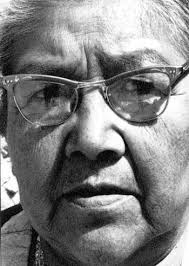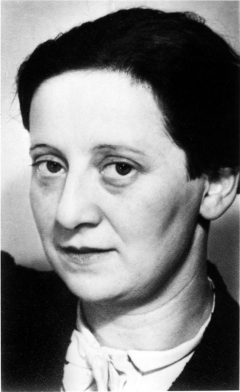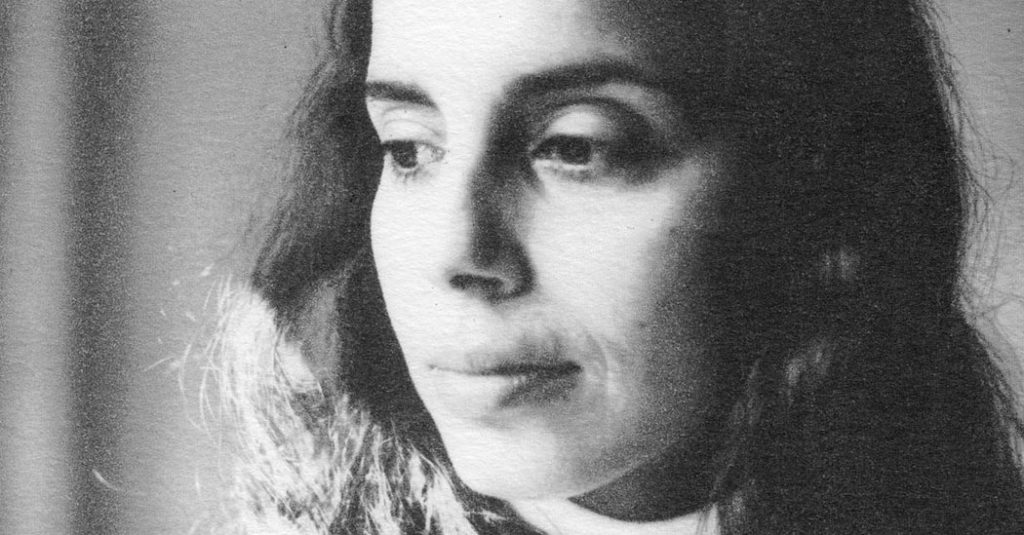This March I decided to share snippets of research I’ve done on female creatives, specifically visual artists. The response through private messages and comments made clear that these women’s stories should be eligible for an homage of sorts, and their stories should not be buried in heavy art texts only to be accessed by the annointed art scholar. So in the spirit of sharing and fast output, here are the 21 women I discovered and rediscovered this month for Women’s History Month. There are thousands more, so I hope this inspires more digging and scholarship around these creative women. – Peace

Ruth Miller Kempster (1904-1978). was a talented realist painter born Ruth Blanchard Miller in Chicago but raised in Pasadena, she attended the Stickney Memorial Art School in Los Angeles, California and the Otis Art Institute in Los Angeles. She continued her studies in New York and the L’ École des Beaux Arts in Paris. She left Paris because the school did not allow unmarried female students to work from nude models and moved to Florence, where she studied mural and fresco techniques and met an Italian artist who she followed to Rome. In the 1930s Miller taught art in Pasadena at the School of Fine Arts. gaining a reputation as a realist painter, earning significant local commission and even winning the silver medal in art for a painting titled “Struggle” exhibited at the 1932 Los Angeles Olympics. In the 1930s Miller taught art in Pasadena at the School of Fine Arts.

Ree Morton was an American visual artist associated with the postminimalist and feminist art movements of the 1970s.
She decided to become a full-time artist in the late 1960s in her 30s), receiving a BFA from the University of Rhode Island in 1968 and an MFA from the Tyler School of Art at Temple University in 1970. Ree worked in a variety of mediums including sculpture, drawing and installation. She used “confrontational innocence,” as described by art historian Lucy Lippard, and humor in her sculptures that referenced everyday decorative forms such as curtains, ruffles and swags. Ree described her work as “light and ironic on serious subjects without frivolity.” Her piece Bake Sale (1974), was spurred on by a male faculty member at the Philadelphia College of Art who suggested that women on the faculty should stick to bake sales.Morton died at the age of 40 in a car accident in Chicago, Illinois on April 30, 1977. #herstory#arthistory#artist#installationart#feminist#70s#womxn#womanshistorymonth

Helen S. Torr was an early American Modernist painter, born in Pennsylvania. In 1906, She won a scholarship to the Pennsylvania Academy of the Fine Arts, where she studied under William Merritt Chase. She was known as “Reds” because of her hair color, Torr worked alongside other artists, namely her husband Arthur Dove and friend Georgia O’Keeffe. She rarely showed her work while alive, and curators speculate that Steiglitz would not show more of her work as he found it a threat to Georgia’s distinct Modernism. Helen asked that her work be destroyed upon her death, instead her sister donated much of her work to the Heckscher Museum. Her work is currently held in the Metropolitan Museum of Art and the Boston Museum of Fine Arts.#herstory #womenshistorymonth #womxn #artist #painter #helentorr #

Marie Zieu Chino was a Native American potter from Acoma Pueblo, New Mexico. Marie and her friends Lucy M. Lewis and Jessie Garcia were the three most important Acoma potters during the 1950s, who along with Juana Leno, were called “The Four Matriarchs” who “revived the ancient style of Acoma pottery.” At age 15 in 1922, Marie won her first award at the Santa Fe Indian Market. She continued to receive numerous awards for her pottery, and in 1998 was given a “Lifetime Achievement Award” from the Southwestern Association for Indian Arts. Marie was the matriarch of the Chino family of potters. She helped her children, including her five daughters, learn the fine art of pottery making. Marie’s work is held by the Holmes Museum of Anthropology, the Spurlock Museum, and by the National Museum of the American Indian and the National Museum of Women in the Arts in Washington, D.C.

Josephine Verstille Nivison “Jo” Hopper was an American painter who studied at the New York School of Art under Robert Henri and her classmates included George Bellows and Edward Hopper. She showed six of her watercolors at the Brooklyn Museum in 1923 and won the Huntington Hartford Foundation fellowship in 1957. At age 41 she married Edward Hopper, who was a frustrated artist still identifying as an illustrator. She introduced him to curators and his work gained prominence and momentum at his age 42. Their marriage was tumultuous and physically violent, where she recorded numerous brawls in her journals. After Edward’s death she gifted over 3,000 works of hers and his to the Whitney Museum. The Whitney got rid of all but three of her works, with only a list of her paintings remaining as evidence to this blatant disregard of her work. The only things from Jo’s hand to survive at the Whitney were a few minor pieces that managed to pass as Edward Hopper’s; none of these have been published or exhibited, and none have been accessioned as her work.
Samples from the list of works discarded by the Whitney: * The Provincetown Bedroom, watercolor on paper, c. 1906
* View of Harbor in Volendam, oil on panel, 1907
* View of Haarlem, oil on panel, 1907
* Shacks, watercolor on paper, 1923
* Our Lady of Good Voyage, watercolor on paper, 1923
* Guinney Fleet in Fog, c. 1926–27
* Movie Theater–Gloucester, c. 1926–27
* South Truro Church (Odor of Sanctity), c. 1930
* Chez Hopper I–IV, series of paintings of Hopper’s South Truro house, 1935–1959
* Cape Cod Hills (exhibited as Sandy Hills), c. 1936–38
* Dauphineé House, c. 1936–38
* The Kerosene Oil Lamp (Gifts–Cape Cod Bureau Top), oil on canvas, 1944
* Park Outside Studio Window, 1945
* Church of San Esteban, oil on canvas, 1946
* Jewels for the Madonna (Homage to Illa), oil on canvas, 1951
* Edward Hopper Reading Robert Frost, oil on canvas, c. 1955.

For over 70 years, Boston born Loïs Mailou Jones was an influential artist and teacher. Loïs’s art gained attention while living as a black expatriate in Paris during the 1930s and 1940s. She worked with different mediums, techniques, and influences throughout her career. Her travels in Europe, Africa, and the Caribbean influenced her paintings. She felt that her greatest contribution to the art world was “proof of the talent of black artists”. While she wished to be known as an American painter with no labels, her work echoes her pride in her African roots and American ancestry. Loïs’ work is in the permanent collections of the Metropolitan Museum of Art, Smithsonian American Art Museum, Hirshhorn Museum and Sculpture Garden, National Portrait Gallery, Boston Museum of Fine Arts, among others.

Frederika “Friedl” Dicker-Brandeis was a Viennese left-wing artist who studied and taught at the Weimar-Bauhaus. She was involved in the textile design, printmaking, bookbinding, and typography workshops there from 1919-1923. After leaving the Bauhaus, she worked as an artist and textile designer in Berlin, Prague. She was subject to Nazi interrogations which in turn informed her painting. Friedl was deported to Theresienstadt, the “model camp” where she taught art courses to children, in 1942. She was murdered at Auschwitz in 1944. #herstory #arthistory #womenshistorymonth #womxn #painter #artist #art #friedldickerbrandeis #vienna #austria

Lorenza Böttner, originally named Ernst Lorenz Böttner, was born in 1959 into a family of German origin in Punta Arenas, Chile. At the age of eight, s/he received an electric shock after climbing a pylon, as a result of which both arms were amputated below the shoulder. Lorenza refused prosthetic arms, but developed an acute interest for classical ballet, jazz, and tap dancing, and learned to paint with feet and mouth. S/he studied painting at the Kassel School of Art, graduating with a thesis entitled “Behindert?” in which s/he questioned the category of disability, rejected being considered a freak and explored the genealogy of mouth and foot painters. S/he was affliated with the Disabled Artists Network, making contact with artists like Sandra Aronson and defending the existence of a mouth-and-foot-art that demands to be recognized by art history and institutions. S/he died in 1994 from HIV-related complications. Her work was featured in the Neue Galerie at Documenta 14. #herstory #arthistory #womenshistorymonth #allwomen #womxn #painter #art #artist #transgender #painting

Barbara Morgan was an American photographer best known for her depictions of modern dancers including Martha Graham and Merce Cunningham. She was a co-founder of the photography magazine Aperture. Her abstract work was informed by her studies of the Chinese Six Canons of Painting, about “rhythmic vitality”, or essence of life force, described as the artist’s goal of expression. #herstory #arthistory #art #artist #photography #womxn #aperturemagazine

Dorothy Napangardi was a Warlpiri speaking contemporary Indigenous Australian artist. She had little formal schooling, and started painting in her late 30s. She was instructed in the historic Dreaming of her people. ‘Dreaming’ is a translation of the Warlpiri word ‘Jukurrpa’, which describes the origins of ancestral beings in the land, and identifies the sacred places where the spirits reside. The Jukurrpa theme, generally, is one of the inseparability of the self from the environment and usually includes travelling across the land. These ideas can be found in Napangardi’s art, with its lines and intersecting spheres suggesting spiritual meaning and depth. Napangardi was killed in a car accident on 1 June 2013. #herstory #arthistory #painting #aboriginal #australia #at #artist #womxn #womenshistorymonth

Toyen,https://surrealism.website/Toyen.html born Marie Čermínová, was a painter, drafter and illustrator and a member of the surrealist movement. She adopted the name Toyen from the French word for “citizen”. Often she referred to herself using male pronouns and used her art to explore gender and express queer desires. Toyen Co-founded the Czech Surrealist Group in Prague in 1934..#herstory #arthistory #surrealism #womxn #painter #queer #transgender #artist #art #toyen

Janet Sobel dripped paint all over the canvas before Pollock. She started working as a painter in 1937 at age 43, with four kids. Her work was included in Peggy Guggenheim’s Art of This Century Gallery in 1945, where her work made an impression on Pollock. She has often been marginalised as a “housewife” or amateur, and her influence discarded. By 1948 she had developed an allergy to paint though continued to work in crayon. #herstory #arthistory #abstractexpressionism #painter #art #artist #womxn #janetsobel

Rosario Cabrera was called the “first great Mexican painter of the twentieth century” by the Mexican Museum of Women Artists. She became the first female mexican artist to exhibit in Paris and the first female director of a painting school in Mexico. She became a lifelong advocate and activist committed to making art accessible to a greater population, especially in rural communities. #herstory #arthistory #womxn #womenshistorymonth #mujer #painter #artist #art #rosariocabrera

Hannah Höch was a Dada artist and one of the first artists to use photomontage. Her work with themes of androgyny, gender roles and political structures supported the women’s liberation movement in the Wiemer Republic (1919-33). Hitler deemed her work ‘degenerate’ and it landed in the exhibit meant to shame artists doing bad works. She died in Berlin in 1978. #herstory #arthistory #womenshistorymonth #womxn #hannahhoch #photomontage #art #artist

Jay Defeo was a Bay Area artist who was known primarily for her 2,000 pound painting “The Rose”. 25 years after she passed away, the Whitney Museum showed over 150 pieces of her vastly prolific and varied works spanning a 40 year career. She never created work for the marketplace, and explored tirelessly paint, metal, collage, photography and jewelry to support herself at times. #herstory #arthistory #womensmonth #womxn #art #artist #painter #sculptor #jaydefeo

Lyubov Popova was one of the first female pioneers in Cubo-Futurism. In 1916 she joined the Supremus group with Kazimir Malevich. At age 35, Lyubov died at the peak of her artistic powers two days after the death of her son, from whom she had contracted scarlet fever in 1924 in Moscow.

Alma Thomas was the first black artist to have a show at the Whitney at age 85. She taught middle schoolers art for 30 years. Her bold abstract art reputation faded after her death in 1978 until her work was featured in the White House in 2009, which was met with controversy by critics (art and political), including Holland Cotter of The NY Times.

Ana Mendieta was an artist known mostly for her earth body work, where she would photograph varying impressions of her body into the ground. At a young age she fell to her death in NYC from the 38th floor of her apartment building after having a fight with her husband of 8 months (Carl Andre). To this day it is not certain whether she was pushed or it was suicide. #herstory #arthistory #body #art #anamendieta #artist #feminist #domesticviolence #cubanamerican

Not only was Ruth Asawa a brilliant sculptor from California, she attended black mountain college with cage and friends, was a tireless advocate for art in schools, and she was a mother of six. ❤️ #herstory #arthistory #womxnsherstorymonth #scupltor #artist #art #blackmountaincollege

While Camille Claudel’s life was romanticized in literature and film, let’s be clear: she was an artist whose work/ideas were used/stolen by a famous artist whose name rhymes with “Bo-ban” and whose famous sculpture rhymes with “The Stinker”. #herstory #arthistory #artist #womxn #womynsherstorymonth #camilleclaudel #sculptor

Kicking off women’s month with the artist “R. MUTT”, Performance artist Baroness Elsa von Freytag-Loringhoven not #duchamp #women #thinkers #artist #philadelphia #herstory #arthistory #art .
“But is it true to say that Fountain was Duchamp’s work? On 11 April 1917 Duchamp wrote to his sister Suzanne and said that, “One of my female friends who had adopted the pseudonym Richard Mutt sent me a porcelain urinal as a sculpture; since there was nothing indecent about it, there was no reason to reject it.” As he was already submitting the urinal under an assumed name, there does not seem to be a reason why he would lie to his sister about a “female friend”. The strongest candidate to be this friend was Baroness Elsa von Freytag-Loringhoven. She was in Philadelphia at the time, and contemporary newspaper reports claimed that “Richard Mutt” was from Philadelphia…. Baroness Elsa had been finding objects in the street and declaring them to be works of art since before Duchamp hit upon the idea of “readymades”……

3 Comments
Linda E Jurkiewicz • April 1, 2019
Thank you for this wonderful compilation! A few I knew, many women I want to know about!
Catherine Haley Epstein • April 8, 2019
Of course! Thanks for reading:)
Artemis • May 20, 2024
This is really a beatiful piece, so many wonderful stories. Frederika Dicker-Brandeis has such a heart breaking story im glad to see that she is not forgotten.
Would you like to share your thoughts?